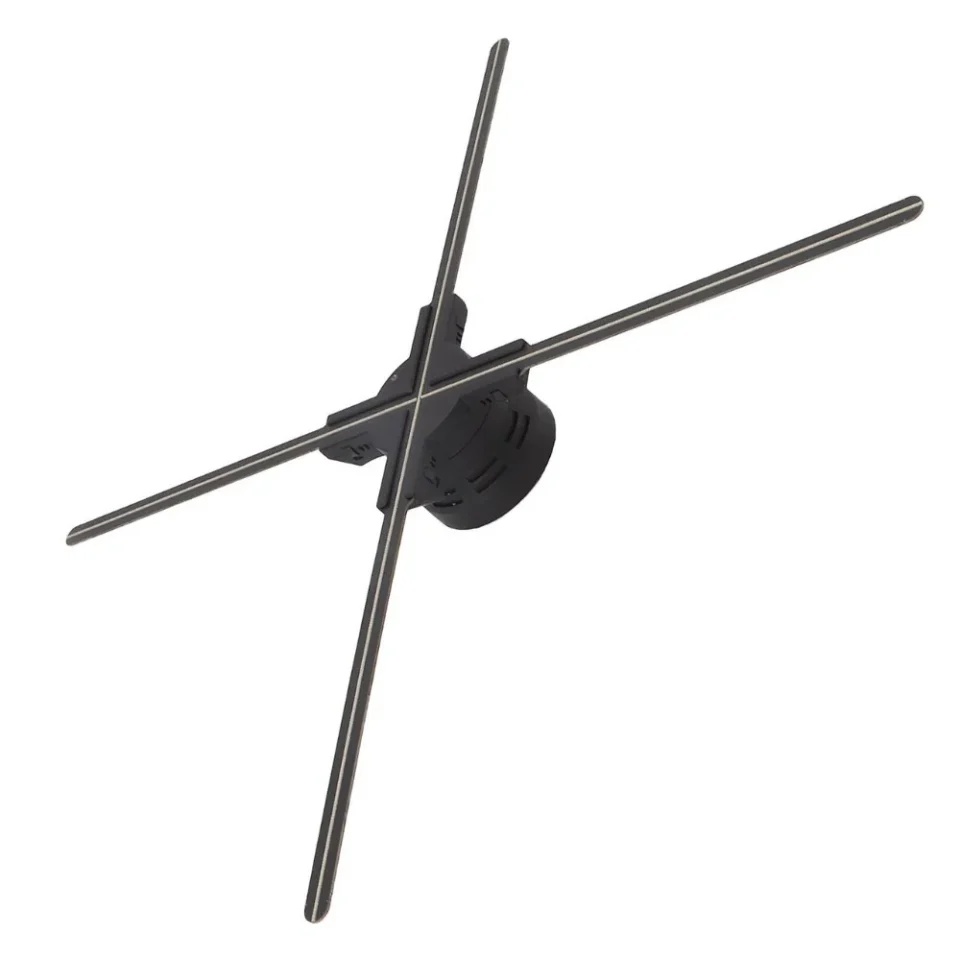Holography, the science of creating three-dimensional images, has long fascinated scientists and artists alike. Unlike traditional photography, which captures only two dimensions, holography records both the intensity and the phase of light waves, allowing for the recreation of realistic three-dimensional images. At the heart of holographic technology lies interference patterns created by the interaction of light waves, which are recorded on a photosensitive medium such as film or a digital sensor. The advancements in technology have brought us to a fascinating era where illusions can be created through the innovative use of HoloFex technology. By understanding the science behind 3D holographic fan technology, we gain insight into how these illusions are crafted and presented to captivate audiences.
The process of creating a holographic image involves splitting a laser beam into two parts: the reference beam and the object beam. The object beam illuminates the subject, while the reference beam is directed onto the recording medium. When the two beams intersect, they create an interference pattern that contains information about the object’s shape and depth. This interference pattern is then captured and stored, allowing it to be reconstructed as a three-dimensional image when illuminated with coherent light, such as another laser beam.
While traditional holography typically requires complex optical setups and precise alignment, recent advancements in technology have led to the development of holographic fan displays, which offer a more accessible and versatile means of creating three-dimensional illusions.
Table of Contents
The Mechanics of 3D Holographic Fan Displays
3D holographic fan displays, also known as hologram fans or holographic projectors, employ a combination of spinning blades and LED lights to create the illusion of a three-dimensional image floating in mid-air. These devices consist of a cylindrical frame with multiple blades arranged in a vertical orientation. LED lights mounted on the blades illuminate the surface of the spinning fan, creating a persistence of vision effect that allows images to appear suspended in space.
The process of creating a holographic image with a fan display begins with rendering a two-dimensional image or video sequence. This content is then sliced into multiple frames and converted into a format suitable for display on the fan. As the fan spins rapidly, the LED lights on each blade illuminate the corresponding portion of the image, creating the illusion of a complete three-dimensional image when viewed from a distance.
While holographic fan displays offer a simplified approach to creating three-dimensional illusions compared to traditional holography, they still rely on principles of optics and perception to achieve their effect. By carefully synchronizing the rotation of the fan with the display of image frames, these devices can create convincing holographic projections that captivate audiences and bring digital content to life.
Applications and Future Directions
The applications of 3D holographic fan displays span a wide range of industries, from advertising and entertainment to education and healthcare. In the realm of advertising, hologram fans offer a novel way for brands to attract attention and engage with consumers in crowded environments such as retail stores, trade shows, and events. By creating immersive and interactive experiences, businesses can leave a lasting impression on customers and drive sales.
In the entertainment industry, holographic fan displays are being used to enhance live performances and events, allowing artists to incorporate stunning visual effects into their shows. From holographic dancers to interactive stage backdrops, these devices offer limitless possibilities for creative expression and audience engagement.
As holographic fan displays continue to evolve, we can expect to see them integrated into a wide range of applications, from virtual meetings and teleconferencing to interactive advertising displays and augmented reality experiences. With their ability to create captivating illusions that blur the line between the virtual and physical worlds, holographic fan displays are poised to revolutionize the way we interact with digital content and engage with the world around us.
Conclusion
In conclusion, 3D holographic fan displays represent a fascinating intersection of science, technology, and art, offering a unique platform for creating immersive and interactive experiences. By harnessing the principles of holography and combining them with innovative engineering, these devices are able to produce convincing illusions that captivate audiences and elevate the impact of digital content. To truly appreciate the magic of holograms, delve deeper into the world of Creating Illusions and learn more about holograms devices that are revolutionizing visual displays. As advancements in technology continue to push the boundaries of what is possible, we can expect to see holographic fan displays become increasingly prevalent in our everyday lives, transforming the way we communicate, entertain, and interact with the world around us.
For more news visit: ezineblog.org

